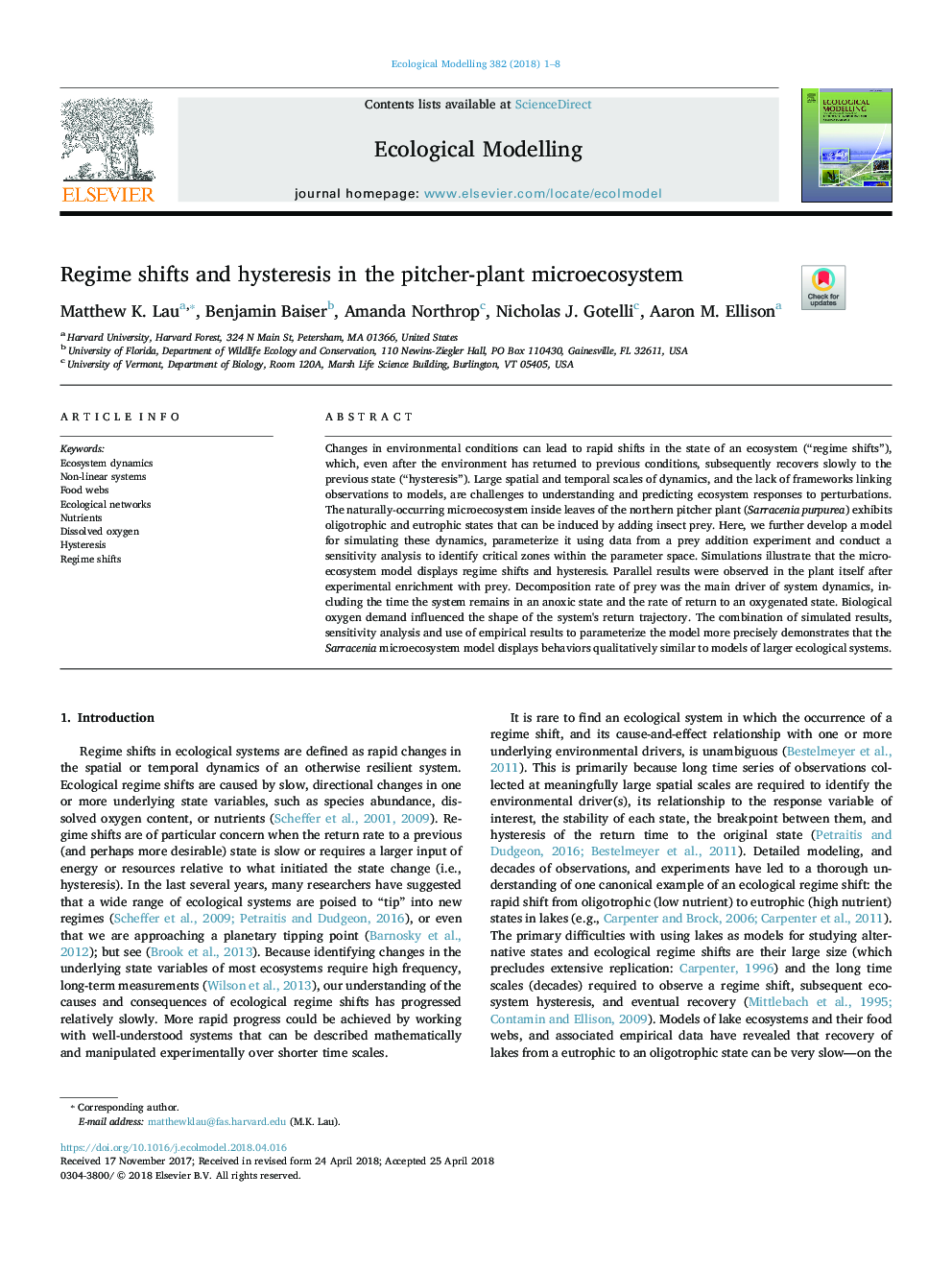| Article ID | Journal | Published Year | Pages | File Type |
|---|---|---|---|---|
| 8846023 | Ecological Modelling | 2018 | 8 Pages |
Abstract
Changes in environmental conditions can lead to rapid shifts in the state of an ecosystem (“regime shifts”), which, even after the environment has returned to previous conditions, subsequently recovers slowly to the previous state (“hysteresis”). Large spatial and temporal scales of dynamics, and the lack of frameworks linking observations to models, are challenges to understanding and predicting ecosystem responses to perturbations. The naturally-occurring microecosystem inside leaves of the northern pitcher plant (Sarracenia purpurea) exhibits oligotrophic and eutrophic states that can be induced by adding insect prey. Here, we further develop a model for simulating these dynamics, parameterize it using data from a prey addition experiment and conduct a sensitivity analysis to identify critical zones within the parameter space. Simulations illustrate that the microecosystem model displays regime shifts and hysteresis. Parallel results were observed in the plant itself after experimental enrichment with prey. Decomposition rate of prey was the main driver of system dynamics, including the time the system remains in an anoxic state and the rate of return to an oxygenated state. Biological oxygen demand influenced the shape of the system's return trajectory. The combination of simulated results, sensitivity analysis and use of empirical results to parameterize the model more precisely demonstrates that the Sarracenia microecosystem model displays behaviors qualitatively similar to models of larger ecological systems.
Keywords
Related Topics
Life Sciences
Agricultural and Biological Sciences
Ecology, Evolution, Behavior and Systematics
Authors
Matthew K. Lau, Benjamin Baiser, Amanda Northrop, Nicholas J. Gotelli, Aaron M. Ellison,
